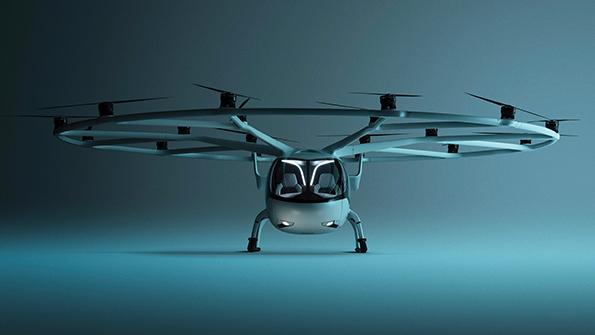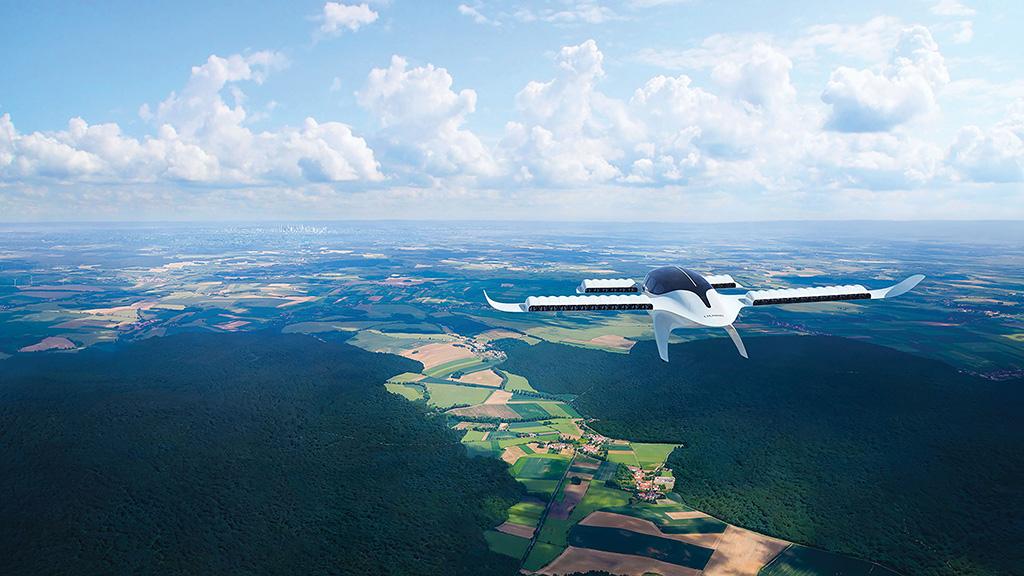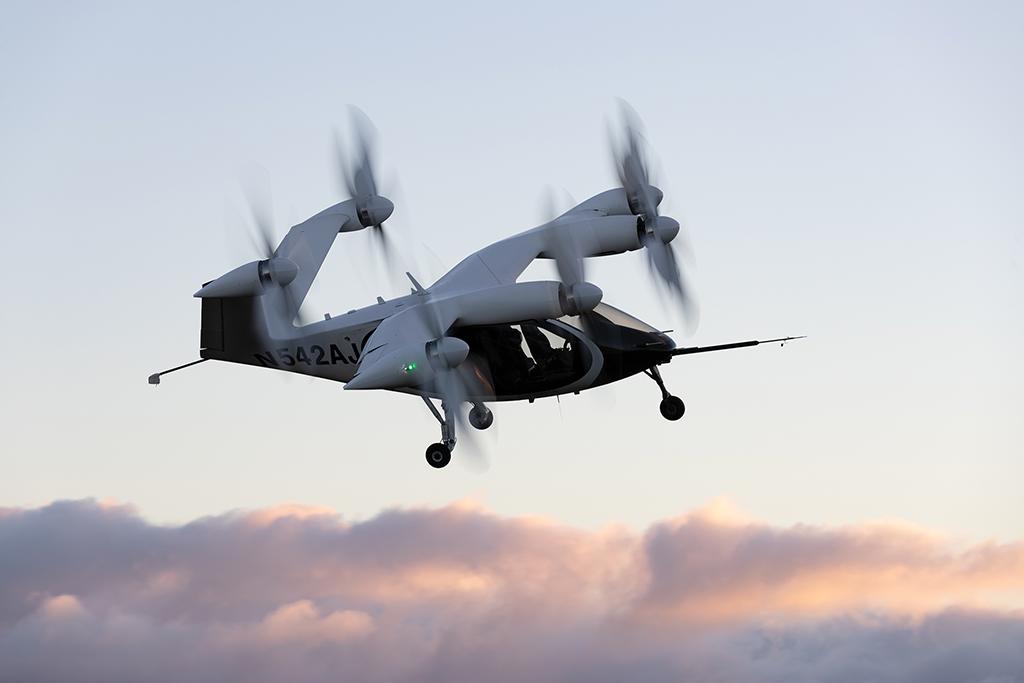
On both sides of the Atlantic, aviation regulators expect the first commercial electric air taxi services to begin in 2024. If achieved, this will be remarkable, given that the urban aerial ride-sharing vision was first articulated barely five years ago.
Both European and U.S. regulators caution that there is more to launching advanced and urban air mobility (AAM/UAM) than certifying the airworthiness of electric vertical-takeoff-and-landing (eVTOL) vehicles. Operational approval, pilot training, vertiport licensing and airspace integration as well as global harmonization are all hurdles that must be overcome. But progress is being made.
- FAA and EASA expect VTOL certifications in 2023
- Efforts are expanding to operating regulations
“We are not decades away. This is real,” FAA Administrator Steve Dickson testified to the House Appropriations Committee on May 21. “[We] anticipate that there’s a good possibility—I would say a high likelihood—that we will have the first designs certified in 2023 . . . [and] could see the first AAM operations as early as 2024.”
The FAA is working with seven companies to certify AAM vehicles, Dickson said. These include manned and unmanned, passenger and cargo vehicles. The European Union Aviation Safety Agency (EASA) has about two dozen projects underway, for both passenger eVTOLs and drones.
“We are in the process of certifying some of the vehicles that would be used for UAM. And the certification target, which we think is realistic, is 2024,” says EASA Executive Director Patrick Ky. “So I believe that commercial use of air taxis can start in 2024 or 2025.” Delivery drones with lower safety requirements are expected to be approved sooner.
“It’s important to understand that it’s not just the certification of the vehicle,” Dickson told lawmakers. “It’s also how the vehicle operates, the infrastructure that it operates from and what all the safety rules are around those operations. So we have to make sure we’re taking an enterprise approach across the agency.”
“Historically, you’d certify an aircraft, go through pilot training, then figure out how to operate it and the infrastructure would follow. We don’t have that luxury today,” says Lowell Foster, director of global innovation and engineering at the General Aviation Manufacturers Association.
“We need to be able to start operating these vehicles as soon they are ready, which means we’ve got to work the training and operations concurrently with certification,” he says. “And if we get these vehicles ready to fly and don’t have the infrastructure and airspace, operations could be severely limited.”
The scope of the task is a challenge for regulators. “It’s not easy for a regulator to prepare rules for something that does not yet exist. It’s not easy to anticipate what the acceptable limits will be for UAM operations,” Ky says. “This is a very different type of aircraft from the ones we are accustomed to certifying.” And working with startups to certify their vehicles is a new experience for both the companies and the regulator, he says.
Nonetheless, EASA has taken an early lead in developing regulations for eVTOL vehicles and UAM operations. In July 2019, the European regulator published the Special Condition for small-category VTOL aircraft (SC-VTOL) describing the airworthiness standards for type certification of these vehicles.

SC-VTOL is a performance-based technical specification that enables industry consensus standards to be used as accepted means of demonstrating compliance with the regulations. EASA itself began working on the means of compliance (MOC) for SC-VTOL “based on the priorities the different OEMs were telling us it was urgent to work on,” says David Solar, head of the EASA general aviation and VTOL department.
EASA released its Phase 1 MOC for public consultation in May 2020. “We received a huge number of comments,” Solar says. The final Phase 1 MOC version, incorporating changes in response to comments, was released in May. “In parallel, we are working on the Phase 2, which is the second priority,” he says.
Phase 1 covers large topics such as handling qualities, structural design, flight loads, emergency landing and crash resistance, as well as fly-by-wire flight controls and control-law validation. Phase 2, planned for release by the end of June, covers areas such as flight performance, energy reserves and fire protection.
“On the structure side, we’ve been a bit more in-depth and refined the no-single-failure criteria, especially for simply loaded structural components,” says Solar. This safety requirement is a departure from how EASA certifies helicopters and has concerned industry, but its approach is expected to become clearer as Volocopter and Lilium proceed though certification of their eVTOL air taxis under SC-VTOL.
“With [Phases 1 and 2], we will cover quite a significant number of areas. We are still working in parallel on Phase 3, where we will present the main concepts during the fourth quarter of 2021,” says Solar. Release of the Phase 3 MOC for consultation is planned for the European Rotors conference in Cologne in November.
After releasing SC-VTOL in 2019, EASA turned to European aviation standards developer Eurocae’s Working Group (WG) 112 to create industry standards as acceptable means of compliance. “We are working closely with Eurocae, and a minimum of 15 standards linked to eVTOL are planned to be published in 2021,” says Solar. But he cites challenges with standards development and industry’s pace.
“It’s not for pleasure that EASA has taken on the development of means of compliance, at least the main ones, but because of the long lead time for industry consensus—especially when you have a number of players with intellectual property they are not willing to share,” he says. “This is not compatible with the timeline industry wants to have.”
While EASA works with Eurocae on SC-VTOL, the FAA is working with standards developer ASTM International on means of compliance for the certification of fixed-wing eVTOLs under Part 23. This has led to a disconnect, with Solar saying EASA has tried to engage with ASTM but has so far been unsuccessful.
“We’ve been working extensively with Eurocae WG-112 on eVTOL and with SAE [International] through their partnership with Eurocae. We are still missing a big one, ASTM,” he says. “Maybe in the next few years we will be able to realign everything.”
Solar is concerned about competing standards. “Only recently have we started to see this trend of competing standards, not very willing to coordinate with each other,” he says. Foster is less concerned. “I’m not completely convinced they’re competing. I think they may overlap in some areas, but I also think they may be complementary in a number of areas,” he says.
“One of the benefits of performance-based rules is that the certification basis allows for alternative means of compliance. My hope is we’ll be able to use either ASTM or Eurocae, whichever is more applicable to the product. The key here is that the FAA and EASA will accept either one,” Foster says.
“The FAA has been working project by project . . . so we don’t get the vision into that, but I want to give EASA credit for being maybe a little more proactive and definitely transparent in that they have published a Special Condition for VTOL and two [MOCs] with one to follow,” he says.

EASA is not just working on vehicle certification. In April, the regulator published the Special Condition for electric/hybrid propulsion systems (SC-E19) covering all aircraft and rotorcraft categories. This is fully consistent with SC-VTOL in terms of propulsion- and aircraft-level safety objectives, Solar says.
“It’s also consistent with the number of architectures we have seen in the different projects. It’s technology-agnostic and performance-based. And it will enable a modular, flexible approach to certification of the propulsion system tailored to what we see today, where we have a lot of configurations in the pipeline,” he says. SC-E19 also signals a shift in how propulsion systems can be certified.
“Today we have the engine type certificate and the aircraft type certificate. But what we’ve seen is these systems are more and more integrated with the flight controller,” he says. SC-E19 allows an engine to be certificated on its own, as it is today, or at the aircraft level, where aircraft certification also encompasses the propulsion system. “This approach has been fully coordinated with the FAA,” Solar says.
In Europe, agency rules such as certification specifications and means of compliance are considered “soft law,” allowing EASA to move quite quickly. But implementing regulations for operations, training and licensing requires legislation and is “hard law,” which takes time to enact.
“On the operations side, clearing the sky for these vehicles, it’s more complicated because it’s a law, and laws have a long lead time,” Solar says. “Even though we are pushing hard, we likely will not be ready for the first vehicles into service. But we’ll probably be able to get dedicated exemptions locally for the first operations.”
In the U.S., commercial air taxi operations are planned to fall under existing Part 135 rules. This will require exemptions to allow the operation of eVTOL vehicles, but Foster says the FAA’s experience with approving drone operations is expected to streamline development of the package of exemptions.
Europe also is paving the way for AAM operations with its approach to unmanned aircraft systems (UAS). “On the operational aspects, we have merged the rulemaking associated with drones and UAM. We see they are similar, flying low potentially in urban environments,” Solar says.
Pan-European regulations for drone operations came into effect at the end of 2020 and, in December, EASA published the Special Condition for light UAS in medium-risk operations. In May, it followed up with guidance for the design verification of such drones. In April, the European Commission adopted a package of regulations enabling UAS and manned aircraft to operate safely in low-altitude “U-space.” This will take effect in January 2023.
On the training side, a Notice of Proposed Amendment setting out the proposed rules for eVTOL pilot training and licensing is expected to be released by EASA this summer or fall. The agency in April approved the first virtual-reality-based flight-training device, a procedures trainer for the Robinson R22 helicopter developed by VRM Switzerland. Costing much less than today’s full-flight simulators, these devices are viewed as key to training the thousands of pilots expected to be required for AAM.
“What we’ve seen is that the potential of these devices is probably huge, and we know the eVTOL OEMs are already working on these kinds of simulators for a couple of reasons,” Solar says. They can more realistically represent the final hover phase where height perception and wide field of view are required. The dynamics of the simulator also could be improved because it has a low inertia. “And last but not least is the cost,” he says.
If there is an overarching concern with the progress on regulations for AAM, it is harmonization between the world’s aviation regulators. So far, Europe and the U.S. have taken different paths, EASA treating eVTOLs as a new class of aircraft by publishing SC-VTOL while the FAA is adapting existing regulations. China, expected to be a major market for eVTOLs, is taking its own approach. “There we have low visibility, and they may have some local agreements we are not aware of,” Solar cautions.
The FAA has decided that fixed-wing eVTOLs with advanced flight controls can be certified as airplanes with VTOL capability under Part 23 Amendment 64 for general aviation aircraft, with the addition of elements from Part 27 for rotorcraft plus special conditions for unique features. This is possible because Part 23 has been revamped into a performance-based regulation allowing the use of industry standards as a means of compliance and enabling manufacturers to innovate, Foster says.
Developers of fixed-wing eVTOLs plan to certify their vehicles under the FAA’s Part 23 or its harmonized EASA equivalent, CS-23. Multicopter eVTOLs fit the definition of helicopters, Foster says, but Part 27 is so restrictive that almost 60% of the specifications would require special conditions. So for this type of vehicle, the FAA has decided to take a case-by-case approach under Part 21.17b regulations for special-class aircraft. This is expected to result in an approach for multicopter air taxis similar to SC-VTOL.
“Harmonization is really a big challenge,” Solar says. “We hope the dialog will really restart, and we’ve seen recently with the FAA that the trend is coming.” The recent movement is the result of German startups Volocopter and Lilium formally applying for FAA validation of EASA certification of their eVTOL vehicles.
“Some of our industry players have applied for validation in the U.S., so we have started to discuss with the FAA in a concrete manner how we can both certify their vehicles,” Ky says. “It’s not been the case the other way around. We’ve had discussions with a number of U.S. players, but none of them has yet applied for EASA validation. And this is the most concrete way of working together.”
EASA and the FAA are working together at the technical level, each trying to understand what the other needs to respond to what industry wants, says Maria Algar Ruiz, EASA program manager for drones. “We have regular meetings. We are trying to understand where we are each heading and, where there are differences, how we can deal with them,” she says. “One thing that is important for both agencies is the use of global standards to support implementation. At the end of the day, this is what is key to achieving harmonization on both sides of the Atlantic.”



Comments